Helicopter Stories: How do we act out a list story?
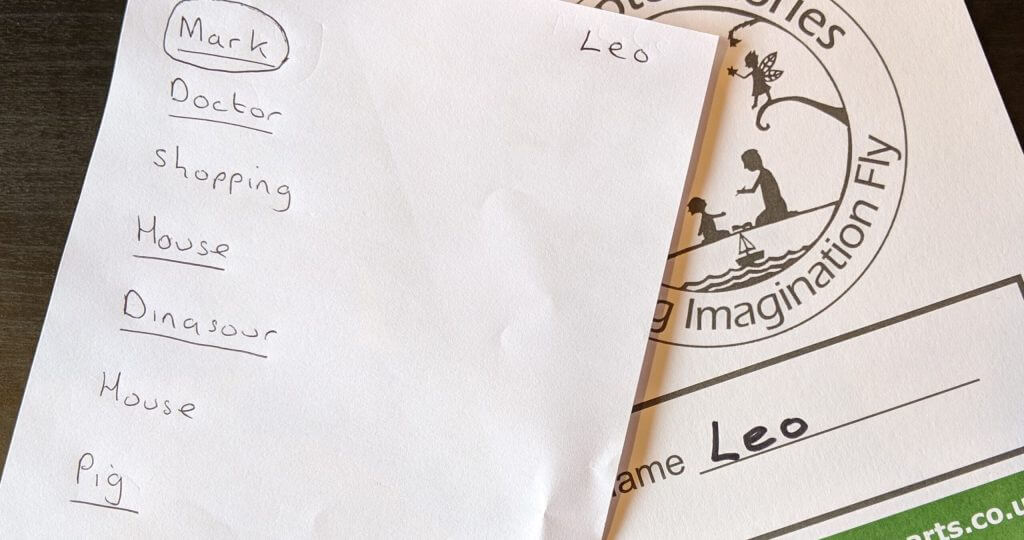
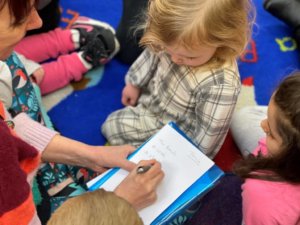 I am often asked about List Stories, and how to act them out.
I am often asked about List Stories, and how to act them out.
Naming a list of characters or objects is often one of the first stages of storytelling. The moment I realise I am being told a list story I write each character/object on a separate line, like a list. For children who want to see their story reach the bottom of the page, this is effective in containing the length of the story, so that it is possible to act it out without it becoming unweildy. It also makes the story look like a poem. Sometimes a list story will weave together to create a narrative in its own right.
Cake. House. Eating. More Cake. Eating. Cake.
Olly’s story above is a great example of a list story. Olly was two months away from beecoming three when he told this story, and already I can see his sense of narrative developing.
But how do you lead the acting out of a story like this?
When I work with two’s, all of them are involved in the acting out. To place value on the story, I read a word. Then I look up and invite the children to act it. Then I read the next word.
For me leading the acting out of any story is this process valuing the child’s words, phrase by phrase, looking at the paper, and then looking up, to ask for an action and observe how the children respond. None of these suggestions are meant to form an exact script, but what I hope to demonstrate in the three examples below, is how it is possible to open up the story (or subtext) that is contained within the list.
- I read the first line of the story – Cake.
- Then (as I’m working with two year olds), I asked “Shall we all pretend we are eating some cake?”
- Next I read the second line – House.
- “Can I see you walking into the house?”
- Eating.
- “Pretend we’re still eating the cake.”
- More Cake.
- “Shall we pretend that there’s lots of cake everywhere.”
- Eating.
- “Let’s pretend we’re eating.”
- Cake.
- “Mmm cake.”
But it’s not just two year olds who create lists stories. Even in Reception and Year 1 some children start their journey to storytelling by telling a list story. So here are two examples of how I work to support the acting out of these types of stories.
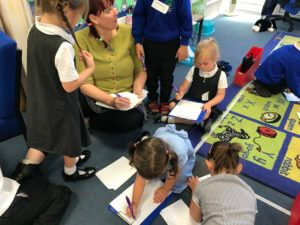 A One Word Story:
A One Word Story:
Here Natalie, from Reception is telling a one word story. The process of leading the acting out of a one word story is exactly the same as a list story.
- I read the word – Cinderella.
- Then I ask – “Can I see how Cinderella walks around the stage?”
- Then I watch, and give Cinderella her moment to shine on the stage, before clapping thank you at the end of the story.
Asking with a verb: By asking to see Cinderella WALKING around the stage I verbally encourage the child to move.
Don’t ask to SEE the character – be more specific
When I start team teaching Helicopter Stories, I often hear teachers asking the following type of question. “Can I SEE what Cinderella looks like?” This is a really hard question. It’s not an acting question. Although it’s great that a ask is being used, rather than the adult demonstrating what that action might look like, for me the question doesn’t work. What often happens with this type of question is that the children end up standing and not moving. “Can I see how Cinderella walks around the stage?” This question allows the child to feel safe to move. They have been invited to move. We can then enjoy watching them walking around the stage as the Princess, or the Cinderella, or the Batman in their own one word story.
Lots of Characters:
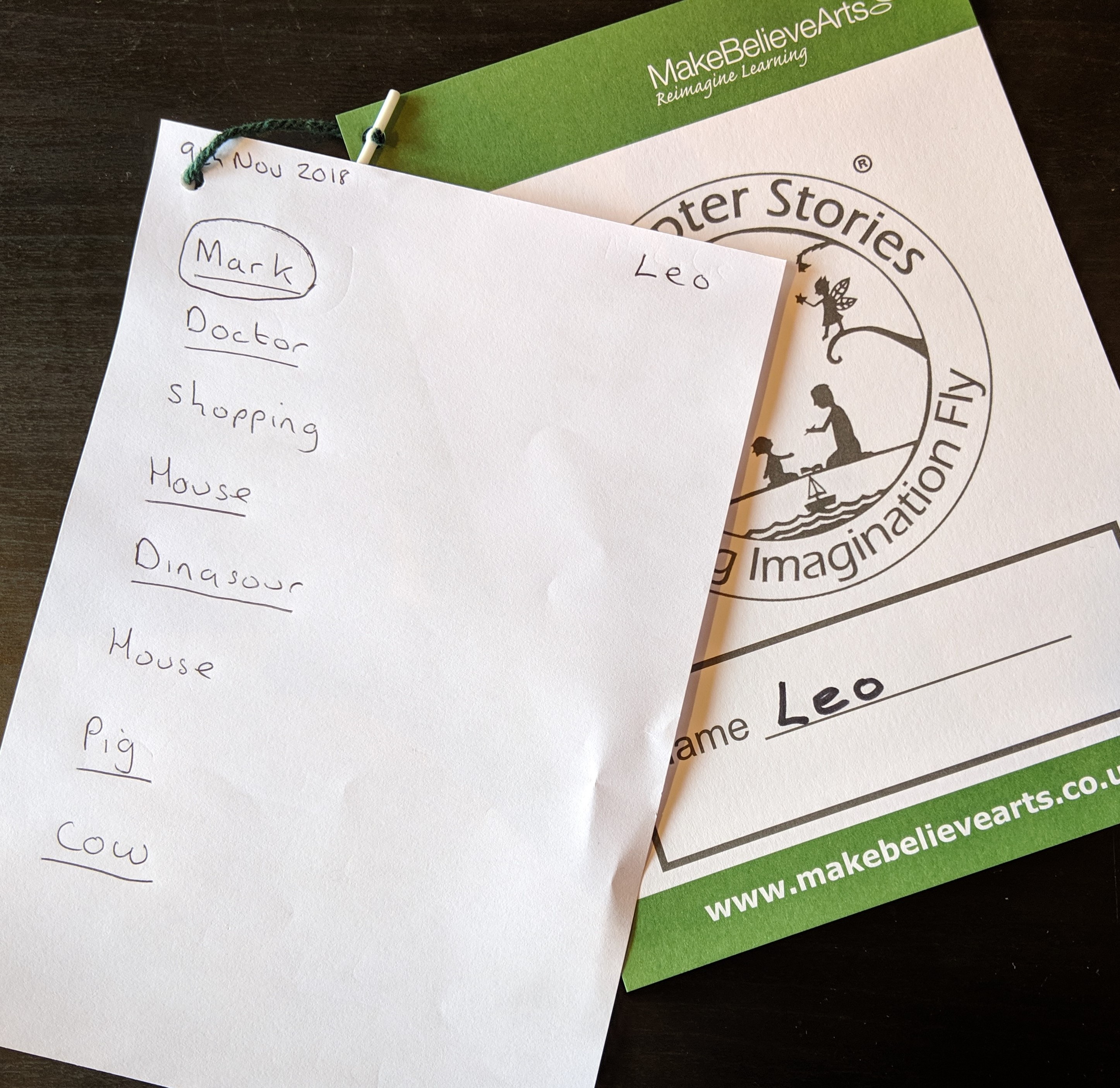
Leo is in reception and this was his first story. His baby brother is called Mark. Mark recently had a bad cough and went to see a doctor. Immediately we can see how children’s life stories begin to fit into the ones they dictate. Once the story is dictated, I read it back to the child and underline all the characters or objects that we will bring to life. Leo wanted to be his baby brother Mark in this story. That character is circled so I remember that this is who he is playing. This helps me to see clearly what characters are needed and reminds me what part the author wants to play.
So how do we act this out?
- I read the first line of the story – Mark.
- I say – “Leo is going to play Mark in his story. Leo do you want to come onto the stage and show me how your brother Mark crawls around?” (notice the verb – Crawls)
- Then I read the next line – Doctor.
- I point to the child whose turn it is going around the circle. “David can you be the doctor? I wonder how the doctor might check on baby Mark to make sure he’s okay? Can you show me? Leo do you want to pretend to be baby Mark coughing.” (Here I was able to pull in my own knowledge of something that had happened in Leo’s life recently, Having spoken to Leo after he’d finished dictating his story I know this is why the doctor is there.)
- Then I read the next line – Shopping.
- “Can I see the doctor and the baby walking around the stage to get to the shops?”
- House.
- “One, two, three. (pointing to the next three children around the stage). Can you show me how the three of you would pretend to be a house? Leo, since it is your story, does the doctor and the baby go into the house? Can I see them?
- Dinosaur.
- Inviting the next child in the circle – “Come and be the dinosaur. Can I see how the dinosaur moves around the stage? Oh I like the way he’s stomping around outside the house.”
- House.
- “Leo, are the people in the house frightened by the dinosaur? Can I see them looking very scared?”
- Pig.
- Next person around the stage – “Can you be the pig? Can I see the pig crawling around the stage? Make sure the dinosaur doesn’t see you.”
- Cow.
- Next person – “Jonathan, come and be the cow. Can I see how the cow moves around the stage? And there we have a cow, a pig and a dinosaur, outside the house, with the doctor and baby Mark inside.”
- “And that is the end of Leo’s story. Let’s clap thank you.”
Key Points:
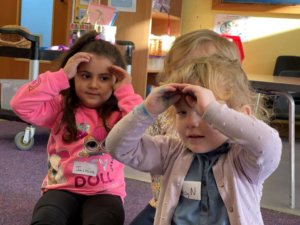
Showing what something looks like is NOT asking for an action. Action questions support children in feeling confident to move around the stage, and to know what is being asked of them. If you ask a child to show you what a car might look like – you won’t get as good a response as if you rephrase it to – “Can you show me how the car drives around the stage?”
Spotlight things you see in the acting out. “I love the way you were holding the steering wheel when you were pretending to drive the car.” Or “I can see your fingers making the dinosaurs claws.”
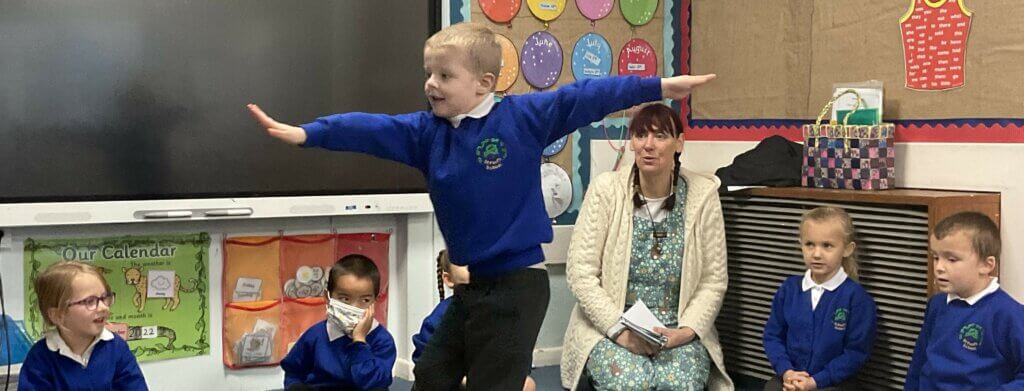
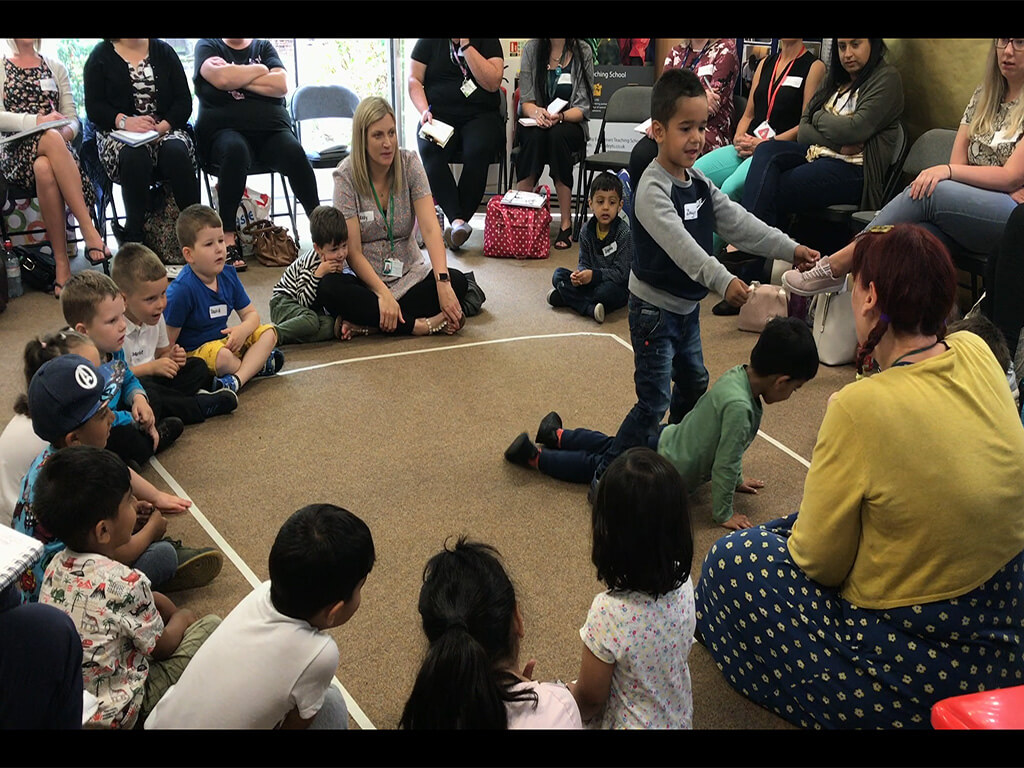
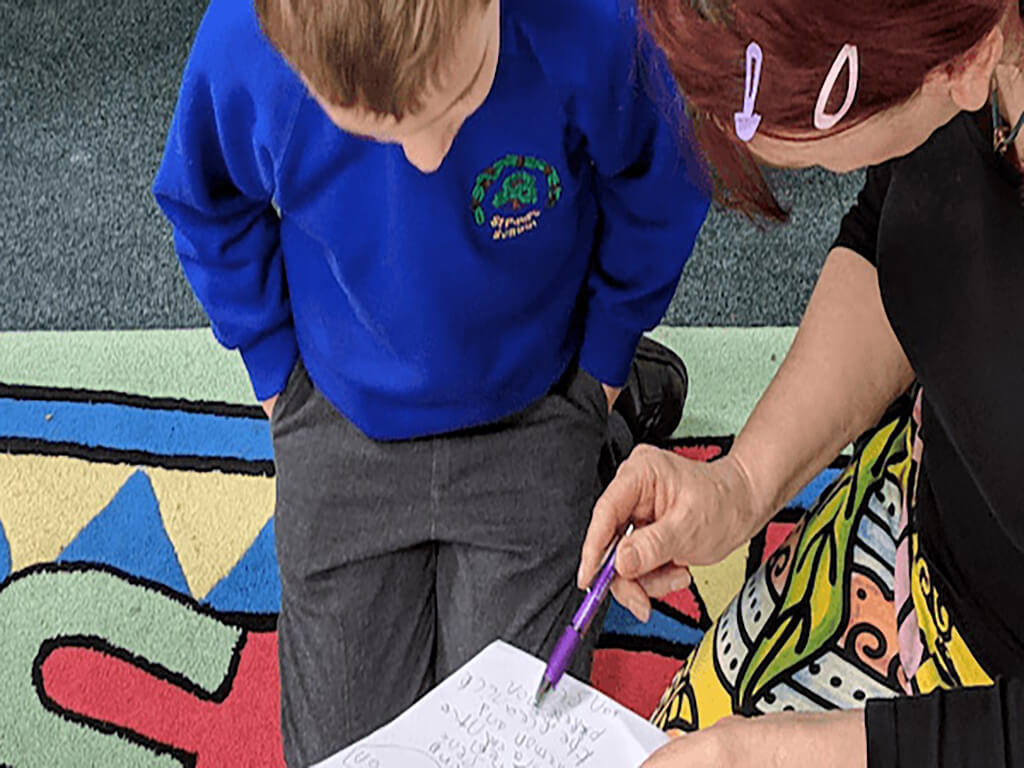
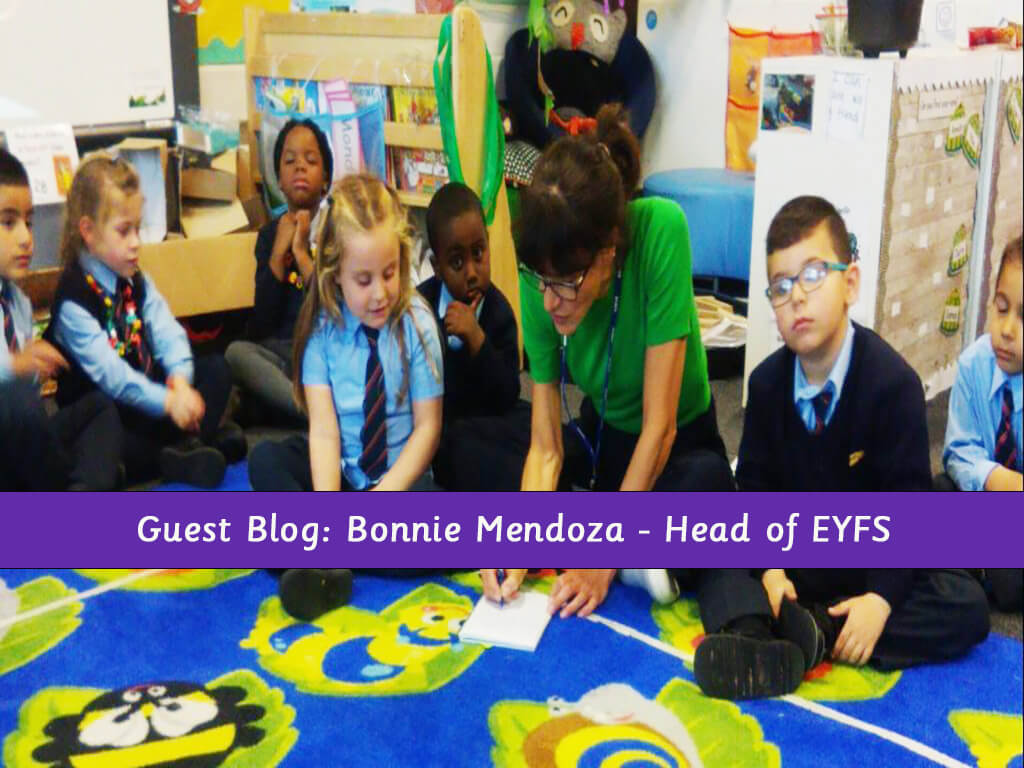
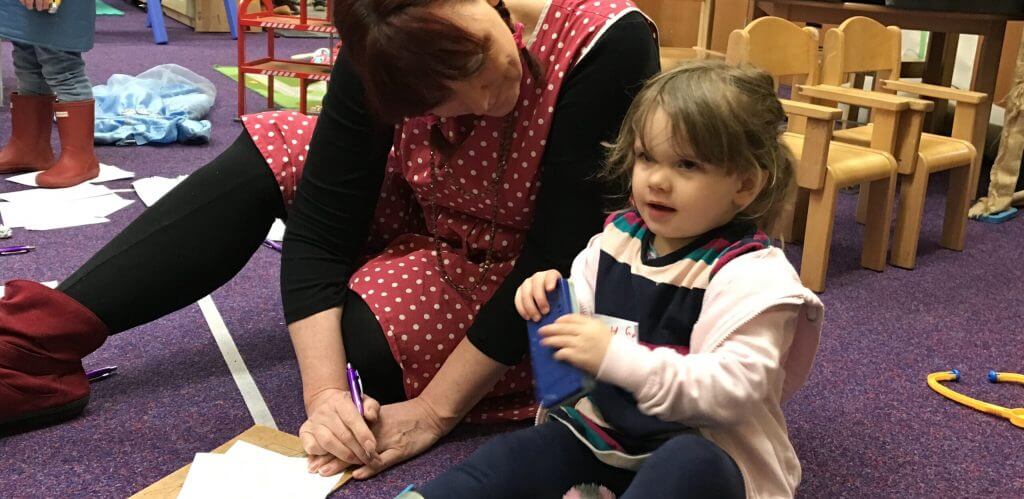
Thank you Trish – very useful! ________________________________
I’m glad it’s helpful. Let me know if you have any questions. X
This is such an interesting post. It’s so important to ask to be shown how characters move as opposed to what they look like. This has really opened up to me what helicopter stories is all about!
This is very helpful. Thanks for supporting with all of these details.
Thank you for this helpful information. It is very important for the early stage of development.